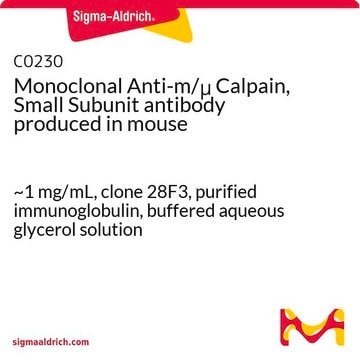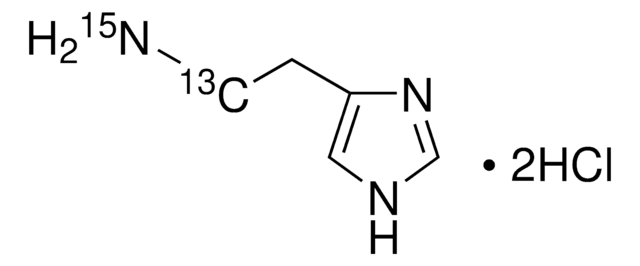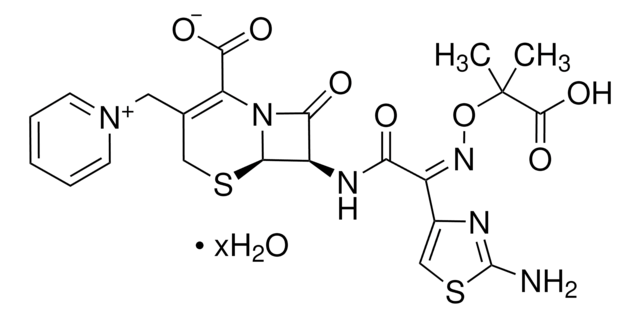C5736
Monoclonal Anti-μ-Calpain (Calpain I, subunit p80) antibody produced in mouse
clone 15C10, purified immunoglobulin, buffered aqueous glycerol solution
Synonim(y):
Anti-CANP, Anti-CANP1, Anti-CANPL1, Anti-SPG76, Anti-muCANP, Anti-muCL
About This Item
Polecane produkty
pochodzenie biologiczne
mouse
Poziom jakości
białko sprzężone
unconjugated
forma przeciwciała
purified immunoglobulin
rodzaj przeciwciała
primary antibodies
klon
15C10, monoclonal
Postać
buffered aqueous glycerol solution
reaktywność gatunkowa
bovine, mouse, rat, human
metody
immunoprecipitation (IP): 2-5 μL (native and denaturing conditions)
indirect ELISA: suitable
western blot (chemiluminescent): 1:1,000
izotyp
IgG1
numer dostępu UniProt
Warunki transportu
wet ice
temp. przechowywania
−20°C
informacje o genach
human ... CAPN1(823) , CAPNS1(826)
mouse ... Capn1(12333) , Capns1(12336)
rat ... Capn1(29153) , Capns1(29156)
Opis ogólny
Specyficzność
Immunogen
Zastosowanie
- western blotting
- co-immunoprecipitation
- immunofluorescence
- immunofluorescence staining
Działania biochem./fizjol.
Postać fizyczna
Oświadczenie o zrzeczeniu się odpowiedzialności
Not finding the right product?
Try our Narzędzie selektora produktów.
Kod klasy składowania
10 - Combustible liquids
Klasa zagrożenia wodnego (WGK)
WGK 1
Temperatura zapłonu (°F)
Not applicable
Temperatura zapłonu (°C)
Not applicable
Środki ochrony indywidualnej
Eyeshields, Gloves, multi-purpose combination respirator cartridge (US)
Certyfikaty analizy (CoA)
Poszukaj Certyfikaty analizy (CoA), wpisując numer partii/serii produktów. Numery serii i partii można znaleźć na etykiecie produktu po słowach „seria” lub „partia”.
Masz już ten produkt?
Dokumenty związane z niedawno zakupionymi produktami zostały zamieszczone w Bibliotece dokumentów.
Nasz zespół naukowców ma doświadczenie we wszystkich obszarach badań, w tym w naukach przyrodniczych, materiałoznawstwie, syntezie chemicznej, chromatografii, analityce i wielu innych dziedzinach.
Skontaktuj się z zespołem ds. pomocy technicznej







